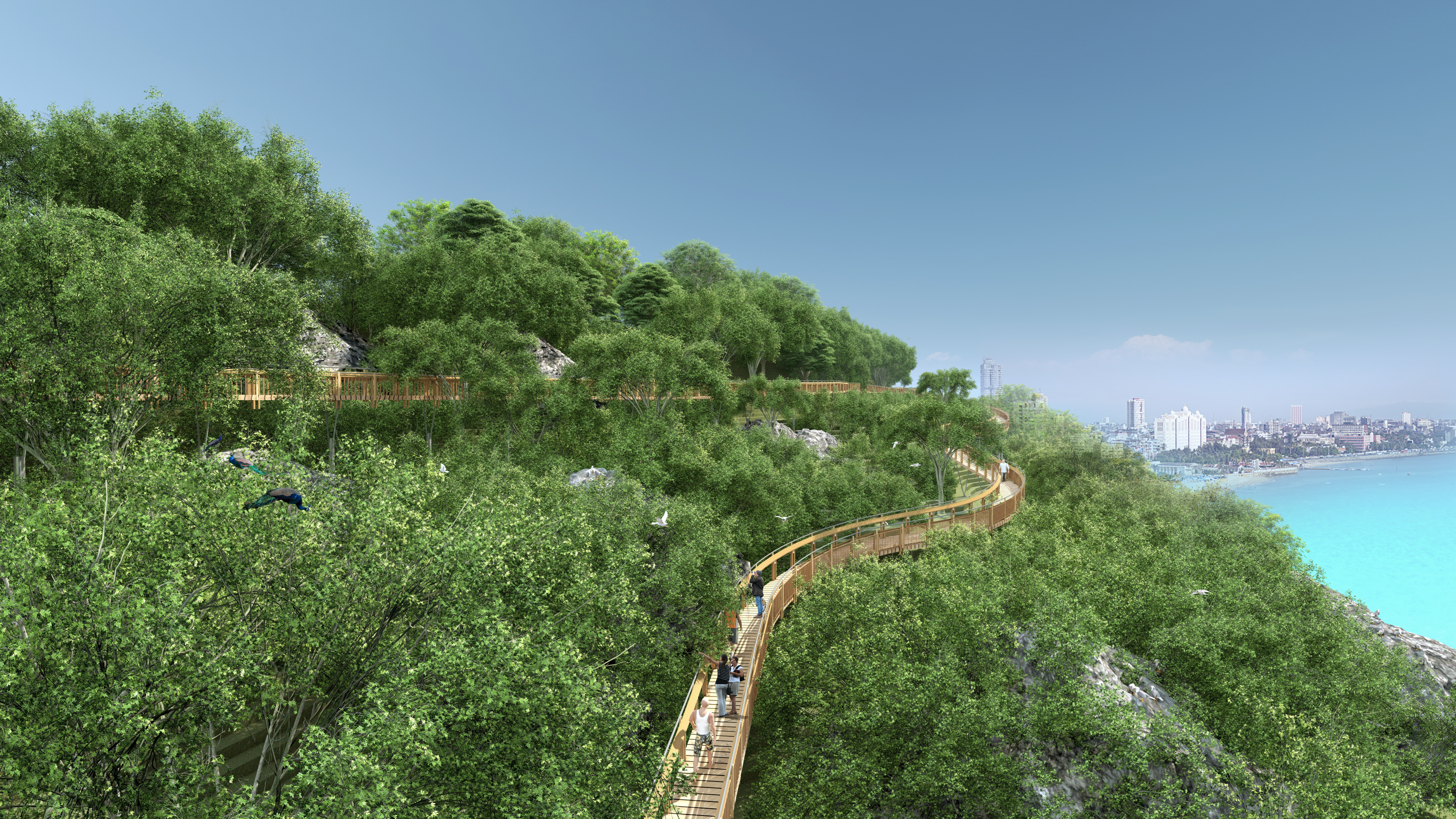Designed by IMK Architects, Malabar Hill’s Treetop Trail aims to replenish Mumbai’s ecosystem. Mumbai has always been a city of paradoxes – the rich and the poor, the skyscrapers and the slums, and the concrete jungle and the old natural ecosystem. Growing urbanization in a city already packed to the brim, as well as rising housing and infrastructure demand, are devouring the city’s remaining green spaces. The Malabar Hill Elevated Forest Trail by IMK Architects is an attempt to sustain one of the last remaining natural ecosystems of Mumbai – The Malabar Hill Forest. The Malabar Hill Forest Trail is an elevated wooden walkway full of twists and turns. This trail is for people to indulge and experience this natural urban forest. This project presents a pioneering way to resuscitate the degrading urban ecosystems. These ecosystems are victims of unchecked development while maintaining the genetic stock of biodiversity.
Malabar Hill’s Treetop Trail – Design Philosophy
The Malabar Hill Forest Trail brings the concept of eco-tourism to the middle of the burnt-out city of Mumbai. Visitors will indulge in an enveloping journey with nature while traversing through this trail. The project is a collective initiative of the Malabar Hill Citizens’ Forum, the Nepeansea Road Citizens’ Forum (NRCF), and IMK Architects. The JSW Foundation also supports this endeavour. Slated for completion by the end of 2021, this project gets its funding from the Brihanmumbai Municipal Corporation (BMC).

“A historically popular venue for joggers, athletes, nature lovers, and leisure seekers from the Malabar Hill neighbourhood, the forest today seems to be falling into a state of disrepair and neglect.” Temporary and permanent dilapidated structures engulf the forest. These include a stairwell, a greenhouse, older steps, trails, fences, outworn guardrails, and so on which increases the threat of encroachment along the eastern edge of the forest.
Need for this Trail
Because of continuous soil erosion along the steep slopes, the hillock’s subsoil has started to give way. Moreover, the area is increasingly becoming a centre of antisocial activities such as liquor brewing and drug consumption. These activities create safety concerns. Clearly, the forest and the ecological systems it supports are threatened. If left unsupervised, they will eventually be completely overrun.

“The Malabar Hill Forest Trail thus arises out of the urgent need to preserve and restore the forest’s rich ecosystem, while creating a new, sustainable interface between nature and the city.” The 12-acre green pocket of Malabar Hill Forest houses an abundance of flora and fauna. These include trees like Gulmohar, Copperpod, Mango, Coconut, Rain tree, Jamun, and Jackfruit. They also include a dozen rare birds including the Rose-ringed Parakeet, Hornbill, Coppersmith Barbet, Magpie-Robin, Golden Oriole, and Peafowl. This diverse mix of plants and wildlife creates a recreation spot full of ecological diversity.
The Proposed Walkway Design
The new elevated walkway will follow roughly the same path as the two existing trails on the ground level. It will stretch for a total length of 705 metres, taking visitors through the entire forest. “The site will be fenced on the ground level and ingress/egress points will be provided at either end of the trail, connecting it to the two existing, prominent points of access for Malabar Hill: a 192-step stairway from the Babulnath temple in the south and a 100-step picturesque stairway carved into the hill from the Hughes Road bus stop area in the south-west, both of which will be restored as part of the project.” Additionally, the designers propose building a utility block with toilets, ticket booths, and other public amenities at the start of the trail towards the west along Siri Road.


The trail design and construction ensures that it does not destroy a single tree in the forest. The walkway will stand on a series of easily repairable or replaceable cylindrical epoxy-coated structural steel columns. In relation to the terrain, column heights will vary from a minimum of 2m to a maximum of 10m. These low-impact pile foundations also make sure that they do not interfere with the existing tree-root systems of the forest.
Benefits of the Malabar Hill’s Treetop Trail
“The seemingly simple intervention of elevating the trail will regulate visitor access to the forest on the ground level, as well as minimize the use of concrete on the forest floor.” As a result, the natural water flow through the hillside and wildlife movement in the forest will not be disturbed.

Construction Materials & Detailing
The walkway deck will use local, weathered Sal wood in order to blend the path into the forest. “It will be supported by steel joists over structural steel beams, which will themselves be supported by the columns. Averaging 1.5m, the width of the deck will increase every 150m to accommodate amenities for visitors: from 1.5m to 3.6m to include seating zones, and to 5.4m to accommodate expansive viewing decks, one of which will feature a glass bottom.”
The designers propose to place warm lighting fixtures within the Sal wood balustrade to minimize light pollution spilling onto the forest floor. Strategically placed information panels and small kiosks along the walk will help first-time visitors and infrequent visitors. A network of CCTV cameras will monitor the precinct. Litter bins will be placed at regular intervals to deter littering.

IMK Architects
Website: www.imkarchitects.com
E-mail: info@imkarchitects.com
Contact: 022-4050 6666/ 2497 3630
Design Team: Rahul Kadri, Harsh Vyas, Bhumika Ganjawala, Heena Sheikh, Pramod Shelar
Biltrax Construction Data is tracking 18000+ projects on its technology platform for its Clients. Email contact@biltrax.com to subscribe and generate business leads.
Discover more from Biltrax Media, A Biltrax Group venture
Subscribe to get the latest posts sent to your email.






















